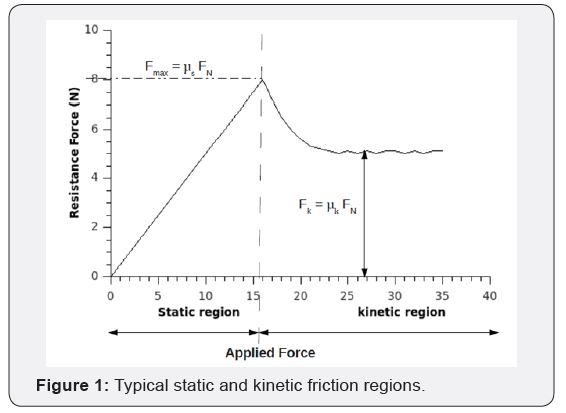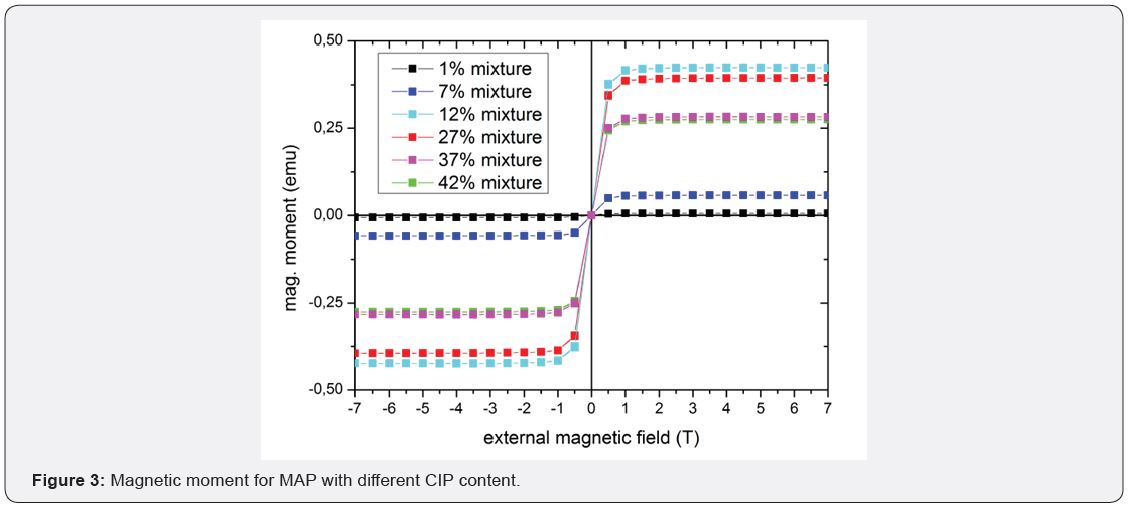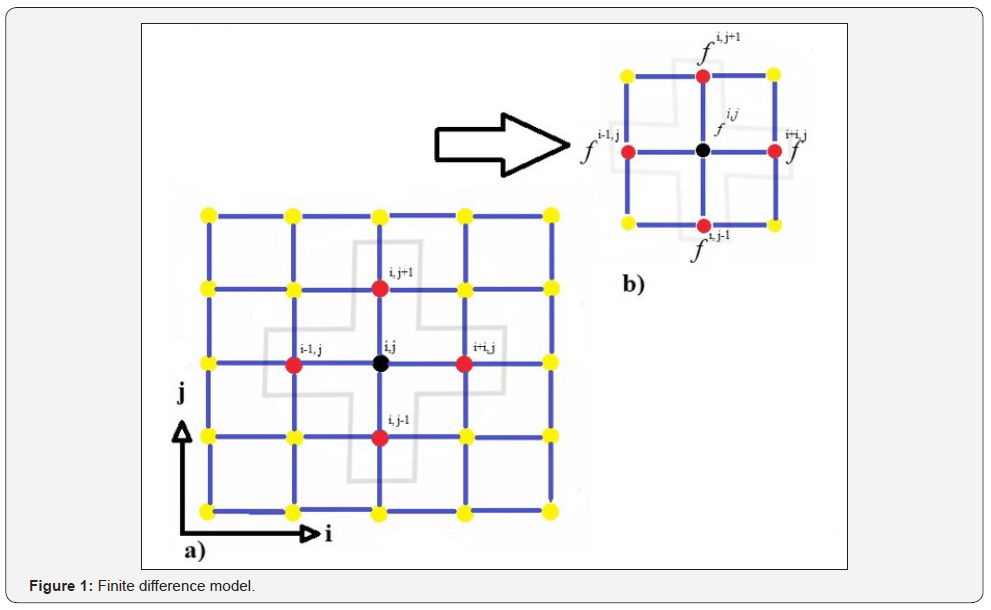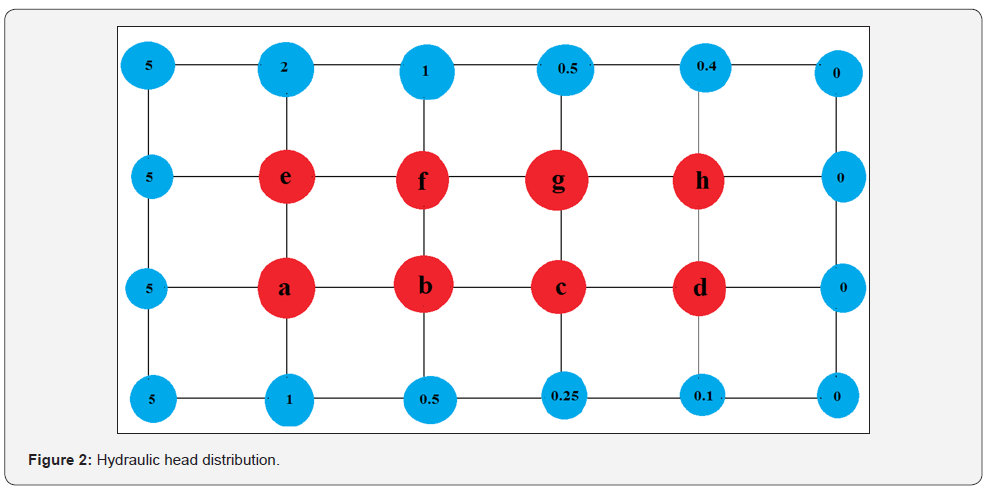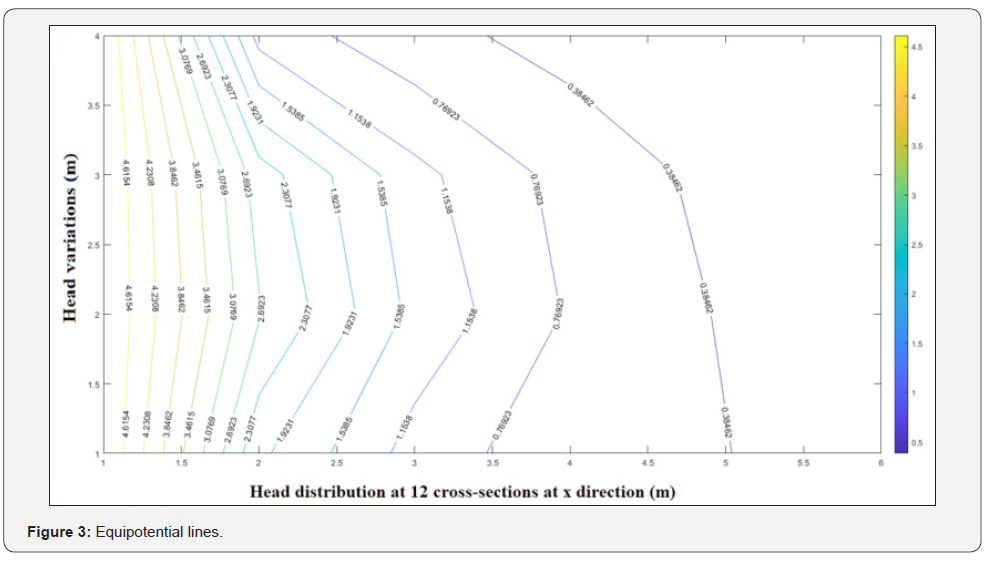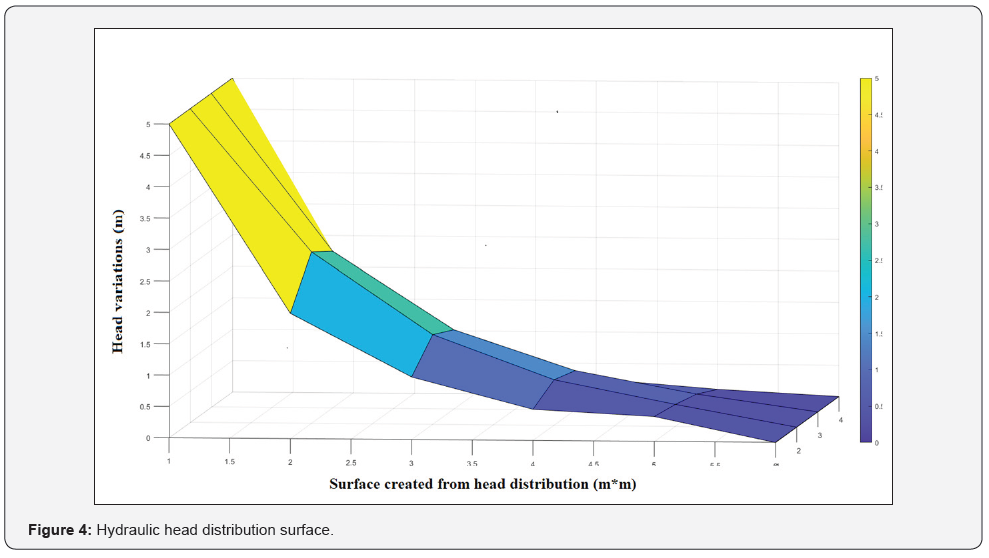Juniper Online Journal of Public Health - Juniper Publishers
Background: The Balanced Score Card (BSC) is a
possible method to tackle the challenges related to the strategic
planning of public hospitals in Hungary.
Aim: To assess the implementation of the Hungarian version of the BSC method in the hospital sector.
Methods: The adapted BSC method was
implemented in 22 publicly financed Hungarian hospitals and assessed
through questionnaires, in-depth interviews, and hospital and
territorial level workshops.
Results: The inner communication channels
have been partly distorted, and a bottom-up planning is crucial in the
planning process. Wide range of involvement of hospital staff proved
successful during the strategic planning and can guarantee a systematic
approach to the implementation of strategic plans.
Conclusions: The scaling up of the BSC method should be enforced by the necessary regulatory amendments.
Keywords: Strategic planning; Balanced scored card; Qualitative analysis; Hospital sector
Strategic thinking and planning have gained
increasing importance in the public sector of both developed and
developing countries. Hospitals require vigilant leadership and
strategic vision from managers who consider different alternatives to
tackle the uncertainty service providers are faced with. Uncertainty in
the health care sector is reduced through the clarification of the goals
of hospitals whilst taking environmental aspects into consideration.
Strong hospital management leads to better-quality health service
provision, and strategic planning is crucial to sustainable growth and
success within the field. The strategic planning of health care
institutions is similar to industrial, commercial and service
organizations, especially in terms of their assets. Strategic theories
and analytical methods applied by companies and business organizations
can also be applied by the publicly funded hospital sector.
The biggest differences can be found in their
content: the goals, the certain environmental factors, the expectations
of
stakeholders, the definition of strategic dimensions, the nature of the
strategic objectives and the specific range of tools [1]. A strategic
objective must be measurable, precise and distinct in time since it has a
great impact on hospitals [2]. It is not a solution but rather a tool
within this competitive market that helps to tackle the challenges of
the health care sector through enabling hospitals to operate in a more
flexible way and adapting more easily to the possible changes in the
environment [3].
The so-called Balanced Scorecard (BSC) can further
improve strategic management and lead to better evaluation and
implementation [4]. The Balanced Scorecard was first suggested by Robert
Kaplan & David Norton [5] in their 1992 article [5]. Lee [6] stated
that the Balanced Scorecard works efficiently as a legitimised
framework for performance improvement because it
is simple to understand and use, it has a clear purpose, is derived
from strategy and prompts continuous improvement [6].
The Balanced Score Card (BSC) had been developed by
Kaplan and Norton in the mid ‘90s [5]. The basic methodology
has become very popular since then and formed part of several
strategy implementations. This tool has been recognised mainly
due to its ability to measure and monitor results in a novel
perspective. Today, it is considered to be the most universally
applied performance measurement system among the new
generation of strategic management tools. Generally, this method
is aimed to build indicators and objectives from 4 aspects:
financial, clients/users, internal processes and finally learning
and resource development. Also, the BSC method offers a
structured combination of financial and non-financial indicators
that generate a new managerial tool for higher and expectedly
more efficient strategy of the health care organization.
Contradicting visions should also be taken into account
when choosing the right indicator for the analysis and elicit
whether clinicians and managers share their views on the
most relevant parameters [4]. Thus, the main purpose of BSC
is the support of strategy implementation, however, using the
Balanced Scorecard in healthcare delivery comes with many
challenges due to its complexity. This field is characterised by a
very diverse and wide range of stakeholders including medical
officers, regulatory bodies, the state and other key actors.
Moreover, it is an area where costs are rapidly growing, hence, it
is crucial to find the right balance between resource allocation,
long term benefits that are generated through the investment in
health, disease prevention, health promotion and urgent health
needs in the short term [7].
Related methodologies, including the strategic map and a
conceptual framework and representation mode also proved to
be very useful as a part of a strategic plan. The strategic map –
a visual representation of the strategy – as a graph composes
the BSC dimensions, and in each dimension the main strategic
objectives, the links between them and other information about
target population and vision. It is important to note that every
strategic map is different and follows a unique design, and they
can consequently adjust to each strategic situation.
The strategic management of hospitals and international
health systems are affected by the following tendencies:
increasing number of chronic illnesses, rise of previously
unknown diseases, aging population, rapid development of
health technologies, expansion of health tourism, lack of human
resources in health care, increase in consumer needs and
awareness, and finally, the influence of the all-time political
state. These factors induce advancement in the level of both
health policy and the individual institutions, considering
environmental circumstances [8].
In Hungary, the vast majority of the hospital sector – the
formerly municipal property local, county, regional and capital
hospitals – was centralized to the State according to the Decision
of the Parliament in two waves: January and May 2012. Only
churches and smaller hospitals owned by civil organizations
remained independent from state ownership and direct
supervision. As a result, the hospital sector became a part of
the central administration, all of these hospital had to adapt the
legal form of public institutions following the rules of general
government legislation, lead their bank account at the State
Treasury, and employ their employees as public servants. From
a strategic planning point of view, these laws and government
decrees create a highly rigid regulatory framework since 2012.
The main income of the publicly financed hospitals comes
through prospective payment system (PPS), the Hungarian
version of DRGs which was introduced in 1993, while chronic
care, nursing wards and rehabilitation are paid by weighted daily
fees. Also, hospitals provide the vast majority (approximately
75%) of out-patient care, specialist consultation and diagnostics
(e.g. CT, MRI) paid by activity through the so-called German
scores, and more than half of the publicly paid one-day surgery
cases. As a whole, this sector represents the 62% of the inkind
benefit. The individual resources of hospitals from private
sources is rather limited: 3-5% of the hospitals on average, only
a small proportion of them can implement more VIP rooms,
extra diagnostic or procedure capacities.
The size of the hospital sector administers approximately
1.8% of the Hungarian GDP and about 1/3 of the public
expenditure of the health care sector [1]. Hence, the importance
and economic power of hospitals in rural cities is rather only a
proposal.
The aims of the Hungarian pilot program called TÁMOP-
6.2.5-B-13/1-2014-0001 “Maintaining Organizational Efficiency
in the Health Care System - Establishing Territorial Cooperation”
included the development of the health service function
methodology and the development of the function through
methodological support at national, regional and community
level which supports the effective implementation of care and
pathway organizational processes. The main objective of this
project was to develop a standardized methodology primarily for
the 105 state owned hospitals. Moreover, it was also important
to create a well-established, transparent planning framework for
providing institutions based on needs and performance, as well
as establishing a consistent sectorial system and maintaining
strategic planning.
A prominent goal of the program was to strengthen the
National Healthcare Services Centre of Hungary (ÁEEK) in the role of an institution which maintains the systematic development
of strategic institutional governance with the help of the BSC
method. The development of strategic management aims to
support the path which improves the awareness, consistency
and cost-effectiveness of the sector so that county providers
can stand public scrutiny. This strengthens the cooperation
between different stakeholders of the institutional system. The
above-mentioned functions were not operating according to the
standards of the National Healthcare Services Centre of Hungary
(ÁEEK), hence, the purpose of the enhancement of strategic
management consisted of the following:
a. Developing a results-oriented institutional
performance management system;
b. Adjusting the coordination of the sectoral professional
and infrastructure planning to national, regional and
institutional goals, including a methodological basis;
c. Creating a link between strategic planning and
reporting and becoming part of the benchmarking system
for institutional management and regional directorates;
d. Developing strategic planning processes embedded in
the management system at sectorial level;
e. Clarifying managerial competences and tasks,
strengthening the management approach, unifying HR
functions and procedures in institutions with state provision.
A formalized study about the use and effect of BCS strategic
management method in the hospital sector has not been
conducted prior to this project. A hypothesis of this study is that
the BSC has an advantage compared to the former professional
organizational development plan because it incorporates a
wide range of financial and non-financial issues and offers a
measurable set of indicators. This project assumes an ideal
situation as proposed within the key findings of a doctoral thesis
(Dózsa 2011b) which was based on an EU funded project that
opened new perspectives whilst building on previous experience,
and moving towards a higher level of general environmental
analysis, ensuring more stable operational environment and a
profound, specified strategic planning methods for hospitals
(Figure 1)
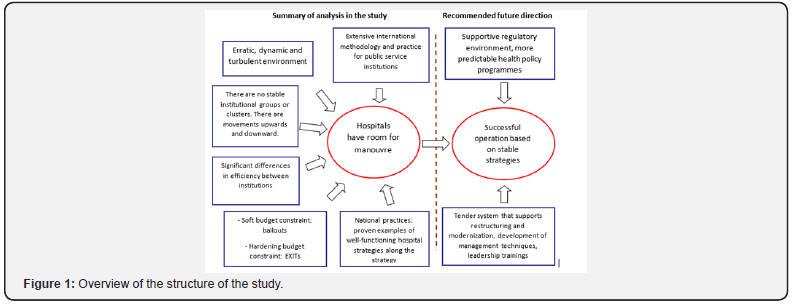
Source [1] During the implementation phase of the project,
a professional consultancy Kockázat Kutató Intézet [8] was
involved, led by one of the key strategic planning experts of
Hungary [8]. The members of this company with the collaboration
of the project team had the responsibility to develop the adapted
BSC method for Hungarian hospitals and to plan and implement
a 1,5 years long strategic planning methodological development
process involving 22 pilot public hospitals. Careful consideration
was given to the selection of the two targeted regions from the
possible six convergent regions, and finally, two regions were
selected to this Strategic Planning pilot program which were not
University Clinics.
The execution of the program generated certain
organizational and human resources demands, including
the development of strategic management skills within the
organization of the National Healthcare Services of Hungary
(ÁEEK), especially for the creation of a knowledge centre for
the Balanced Scorecard methodology, as well as developing,
documenting and communicating the management practices
of strategic management and identifying the leaders. In each
participating hospital, strategic management/BSC officials were
appointed, who oversaw all BSC related operations.
The aim of this study was to assess the implementation of use
of adapted version of Balanced Scorecard strategic management
methodology in the hospital sector and to compare it with
some international examples. This aim is achieved through the
following objectives:
a. To develop an adapted version of the BSC method
(schemes, tables, planning templates);
b. To share knowledge among the hospital staff about the
BSC-based strategic planning method;
c. To test workshops as a general tool for planning
hospital and territorial strategies;
d. To compare the international practice of applying BSC
in the hospital sector of other countries with this recent
Hungarian experience.
The methods composed of a systematic literature review on
the application of BSC in hospitals, quantitative data analysis
based on a questionnaires about the attitude of the staff of
selected hospitals, in depth interviews with director generals
about strategic thinking, and strategic development training
and workshops with top-, intermediate managers and invited
experts of hospitals facilitated by strategic planning experts.
Overall, 212 persons from 22 publicly financed Hungarian
hospitals were involved in the program to adapt BSC in the
chosen Hungarian hospitals in two regions. The concept of
methodological development was reviewed along with the
individual performance management system, the implementation
proposals, and individual leadership objectives were also tested
for all 22 institutions. The same factors were examined based
on the questions of the interviews in each provider institutions.
Inquiries performed included SWOT analysis, situation analysis
and examination of strategic aims for the future.
General data about the hospital sector as a whole and about
the analysed hospitals were obtained from public data sources
of the National Health Insurance Fund Administration (former
OEP, currently NEAK) and the Central Statistical Office (KSH).
Strategic planning documents were made available through the
documentation of the EU funded pilot program.
The starting point of this project was the adaptation of the
Balanced Scorecard method which was tested in two regions
of Hungary. This pilot programme can be considered as a
methodological challenge since the researches had to develop
the methodological framework itself as a first step. The strength
of this project is that it has a heterogeneous sample. Interviews
were used to collect information regarding the adaptation
of the Balanced Scorecard. Interviews were conducted with
the directors of 22 public hospitals in two regions (Northern
Hungary and Western Transdanubia) of the country and the
process of strategic planning was followed through in these
locations.
It is of particular importance to this analysis that the
included hospitals are publicly financed because they rely on
external stakeholders. Interviews were supplemented with the
systematic analysis of strategic outlines of these institutions.
In each institution, all the executives involved in the program
filled out a questionnaire with the same content. The questions
covered the entire workflow of the project, from preparation to
completion. In addition to the keeping deadlines, commented
were gathered on the methodology itself, the involvement and
role of external experts, so that feedback could be provided on
the entire spectrum of the project. The questionnaire consisted
of 19 questions, and in most cases, a four-item scale was used.
Depending on the questions, respondents were provided with
different textual interpretations. Besides gathering feedback,
the main aim of the questionnaire was to interpret the lessons
learned from the implementation of this pilot project.
The approach used in this research is a participative
method which has some limitations. First, only basic descriptive
statistics rather than complex quantitative methods can be
used during the evaluation of the results. Second, challenges to
the practical integration of the programme is also a deficiency
because the program was only tested in 22 public hospitals, and
the possibility of scaling it up to a national level in Hungary is
based on several assumptions, but it would certainly generate
demand for additional human resources. Further research on
the evaluation of this pilot programme could provide a better
understanding regarding the use and experience of the Balanced
Scorecard in the hospital sector. Up to this point, only the
strategic process and the applied methods could be analysed,
and there is no outcome or performance data to measure the
effect of the elaborated strategic planning documents.
Interviews with hospital directors found that each hospital
completed their strategic plans differently. Adequate financial
and human resources were available to develop plans in the
larger institutions, but this caused a problem for smaller ones in
rural areas. Neither their financial resources were involved with
experts, nor were internal human resources available. The scope
of the planning also varied between institutions. In some cases,
the entire hospital management was involved in the planning
process, but there was also a case where only the Main Director
and the Financial Executive were included. Overall, these
strategic plans could be considered as professionally prepared
investment documents with high data content which can be used
in the strategic planning process, but they cannot be treated as
a strategic plan due to some deficiencies such as the absence of
Stakeholder analysis.
Beside these issues, most of the examined institutions are in
a situation in which they are faced with limited space in strategic
decisions due to insufficient opportunities in generating funding
and scarce financial resources. The hospitals could carry
out the analytical tasks on a satisfactory level, especially in
those institutions which are bigger and have sufficient human resources. This needs to be considered when scaling up the
process strategy to less resource-intensive institutions, and
when planning the provision of adequate support from the
region or the central organization that is responsible for the
provision of the institutions. Due to adequate groundwork, the
institutions can carry out the analyses without further action,
and in case of deficiencies, the appropriate methodologies can
be applied correctly.
The recognition and acceptance of the Balanced Scorecard
was clearly positive among the participants and fitted to
the management’s view considerably well (>95%). Most
respondents stated that they assume 5-6 months, or more would
be the optimal duration for creating an appropriate strategy. The
hospital leaders considered the building phase and the creation
of the Balanced Scorecard structure more difficult than the
status analysis phase and required more help in those activities.
In both cases, the proportion of those requiring continuous help
from a professional was significantly high (>40%). There was
only a small number of directors who did not expect any support.
There were several issues that caused difficulties for most of
the institutions involved, including the determination of a clear
aim which is key in the process of strategic planning, having
clear visions about the future operation, as well as the creation
of the strategic map. Moreover, 70% of participants needed help
with classification in the various dimensions. There were also
problems with the correct labelling of categories and with some
differences from the moderators’ point of view. Only 10% of
hospitals could create a professionally decent strategic map due
to the lack of time.
Main findings of the SWOT analyses
The purpose of the SWOT analysis is to summarize the
external and internal factors influencing an organization. It is
a summarizing evaluation which includes prior conclusions
and is also suitable for interpreting results on a valuebased
manner through the dimensions of SWOT. Due to this
analysis, the management can have a comprehensive view
about the organizational strengths and weaknesses, as well as
opportunities and threats of the present that affect the future
success of the institution with varying weight and cannot be
separated from the institution. Based on the review of the
analysis, it can be stated that the length of the analyses was the
appropriate period in two-thirds of the cases. Perhaps the SWOT
analysis meant the least challenging task for each hospital.
Characteristics of the stakeholder analyses
Pilot experiences related to stakeholder analysis proved that
the institutions were mostly able to identify their stakeholders
using the strategic planning method. However, they had
difficulties when determining their partners and competitors.
In addition, evaluation of stakeholders caused some dilemmas
because they misunderstood the concepts of being critical
and having the option to suggest things. The definition of key
stakeholders and actions only happened in case of one institution.
In most of the prepared strategies, the analyses were delivered
by the organization, but no conclusions have been drawn.
The depth and quality of the hospitals’ analyses on selfevaluation
showed quite wide variations. Only 60% of the
institutions went through the analysis to show the extreme
values per dimension, while the extreme values show the
points in question by analysing the answers to each question
by scales of values, which can be used to identify the areas to
be strengthened. Textual evaluation of the results was not
thoroughly carried out either in most of the hospitals.
There were three different kinds of hospitals involved in the
pilot programme; specialized hospitals, city hospitals and county
hospitals. Overall, it can be concluded that there is no correlation
between the strategies of hospitals that are similar in size. Each
hospital reported an average of 15 strategic goals and elaborated
an average of 27 indicators in four separate dimensions. One
general pattern that could be observed across the strategies is
that there are similar goals drafted out in those dimensions that
are related to finance or management, however, those related
to professional growth are more specific and diverse across the
various institutions.
BSC dimensions and strategic objectives
The strategic goals generated during the study were
categorized into four different dimensions:

a. Service recipient and service standards,
b. Service provision and operation processes,
c. Competence and organization development,
d. Finance/Management (Figure 2).
The analysis suggests that there were 8-9 indicators
connected to Service recipient and service standards, 8 to Supply
and operation processes, 5-6 to Competence and organization
development and finally 4-5 indicators to Management on
average chosen by the hospitals. There are some common
strategic goals that are mentioned by all three types of hospitals.
Principally, each hospital includes the introduction or further
advancement of one-day care or outpatient care in their list of
strategic goals within the dimension of Service provision and
operating processes. Most of them emphasizes the importance
of ambulatory surgical care. This improvement is mainly
associated with more efficient time management which was
another typical goal to be achieved. One of the city hospitals
state that: “In case the intervention can be performed in the form
of one-day surgery/cure-type care, we aim to perform them
accordingly in an even higher proportion.” Hence, providers note
the importance of reduced nursing time, – in case it is medically
justified – and significantly shorter patient record time.
Another common ground that most provider institutions
agree on is growth related to IT systems which basically appears
within the goals all four dimensions but in different forms and
with different wording. As one of the specialized hospitals
states: “It is necessary to simplify and develop IT tools to help
patients and their relatives, as well as internal information
management.” This statement is encouraged by city hospitals as
well: “Providing IT tools and software that meet the technical
standards of the age.” To sum up, according to the providers,
exploiting sectorial IT development, complex management of
health data and the creation of controlled transparency ensure
efficiency gains.
The ability to keep professionals that are already employed
by the institutions is mentioned by nearly all hospitals: “ensure
a sufficient number of qualified human resources matching
the needs of the hospital” and “keeping residents within the
institution on the long run”. This emphasises the importance of
developing existential security for workers.
Some of the common strategic aims related to Finance/
Management included: revenue increase, liquidity balance,
economic balance and cost rationalization. While there
were some typical aims regarding Service provision and
operation processes as well, (extension of e-health activities,
IT development, development of medical and nursing care)
this dimension proves to be more diverse with goals such as:
aiming for protocol-based care and improvement of internal and
external communication.
Strategic indicators for measuring the strategic
implementation
Indicators were subsequently categorized into the abovementioned
dimensions. Providers participating in the pilot
programme seem to be the most concerned about patient
satisfaction. Without one exception, all hospitals mention it as
one of their indicators within the dimension of Service recipient
and service standards: “The basic tasks of our hospital include
the improvement of the conditions of patients and increasing
their satisfaction. Patient satisfaction is a complex matter
defined by the length of the waiting list, the conditions of patient
reception, the quality of the accommodation, the empathy of the
staff, the correctness and clarity of the information provided,
and the technical equipment used for treatment.” – as it is stated
by one of the city hospitals.
Another factor that affects all three types of hospitals is the
initiative to decrease the number of permanently vacant positions
which is planned to be achieved by increasing the proportion of
specialized medical practitioners and resident professionals.
Media appearance and the operation of control and management
information system also appear among each type of indicators
of the institutions. On the other hand, there is an indicator in the
dimension of Competence and organization development which
is exclusively mentioned by city hospitals. This indicator is to
avoid fluctuation of professionals and to increase their loyalty
to the institutions. However, some of the indicators are only
relevant in certain types of institutions, for example increased
attendance of conferences and the improvement of healthconscious
nutrition – “to achieve the appropriate amount of salt
intake prescribed by law and to further reduce it” – was only
indicated by specialized hospitals.
Typical strategic actions of Hungarian public hospitals
Similarly, to the strategic goals and indicators, the
same
dimensions are used for the examination of strategic actions.
In case of actions, 9.3 indicators turned out to be connected to
Service recipient and service standards, 8.9 to Service provision
and operation processes, 6 to Competence and organization
development and 4.3 indicators to Finance/Management on
average. There is no significant difference between the numbers
of strategic actions and between the types of hospitals either.
Specialized hospitals collected 35, city hospitals collected 27.4
and county hospitals collected 28.7 strategic actions on average.
A strategic action that is emphasized by all hospitals regardless
of which type they belong to is to act as a professional practice
institution for medical students, including nursing students. As
one of the county hospitals states: “Well-organized, systematic
graduate and postgraduate training, retraining and research and
development - in cooperation with universities and hospitals
of the region. Developing the personal and material conditions
of a practical teaching background.” Relating to this strategic action,
recruitment of entry level professionals is also a popular
indicator among the participating hospitals.
Another common strategic action is infrastructural
restoration or expansion and rearrangement of already existing
departments. In addition, patient comfort, patient satisfaction
and the extension of screening tests are also in the centre of
planned advancements: “Increase the number of screening
days, operate and develop self-sustained imaging diagnostics,
promotion of screening tests.”
The aim of this paper was to describe the experiences gathered
during a Hungarian pilot study of introducing the Balanced
Scorecard method to the hospital sector. As a commonly used
tool, the BSC needs to be adapted to the institution in question
considering its unique specialties. An advantage of this tool is
that it is adequately flexible which allows it to fit for a variety
of different situations [4]. Moreover, in this particular case, the
public sector requires public managers to adopt comprehensive
performance measurement tools to assist them in choosing from
a diverse set of measures in public sector organisations. Another
challenge the organisations need to deal with is that they must
be able to provide a complete measure of performance that is
comprehensive, readily coherent and is applicable to public
actors [5,10].
One of the most common and internationally used tools in
strategic management is SWOT analysis. For example, in the
Netherlands more than 80% of health managers from hospitals,
home care organizations and nursing homes reported the use
of SWOT analysis in their strategic management processes (van
Wijngaarden – Scholten GRM – van Wijk, 2012).
A research conducted in Serbia [11], which focused on
healthcare institutions in urban areas and used a survey to assess
the current state of strategic management in Serbia, aimed to
propose a model to facilitate and improve this mechanism.
Moreover, it also aimed to analyse the existing systems in
some other countries such as the USA, Afghanistan, Sweden,
Canada, Denmark and Germany. The research method was
based on a survey, including 20 questions which were selected
after conducting interviews with focus groups and performing
an analysis of present trends in implementation of strategic
management in healthcare institutions worldwide. A total of
43 institutions were surveyed within the course of the study.
Researchers evaluated the following strategic management
techniques (for the analysis of both internal and external
environment), in order of frequency of use: SWOT analysis was
used at the rate of 50%; PEST analysis at 23,5%; objectives tree at
14,7%, gap analysis at 17,6%; and finally, stakeholder analysis at
20,6%. It is also worth mentioning that the most frequently used
forecasting methods were the scenario method (23.5%) and the
simulation method (23.5%) (Mihic – Obradović – Todorovic –
Petrović 2012: 3448-3452).
Further researchers [11] in a neighbouring country also
studied the possible implementation of strategic management
tools for hospitals in order to achieve better performance
and operational efficiency. Milic and his colleagues assessed
the current practice of strategic management in healthcare
organizations in Serbia using surveys that were analysed by
statistical methods. They revealed that in many of the HC
organizations a strategic plan has been developed (strategic
goals were clearly defined), but they failed to successfully
and systematically implement it. They also highlighted the
importance of standardized methodology, such as the Balanced
Scorecard which was rarely used among the HC institutions.
Following the remarkable centralization, the regulatory
framework has become rather rigid (constricted) from the
perspective of strategic planning, with a rather narrow space for
unrestricted managerial decisions. The managers are faced with
rigid regulation of HR management, performance management,
options to change, significant modification of capacities of
hospitals (e.g. N. of ICU beds, STC beds, N of operational rooms),
increase in the contracted volumes of paid services.
However, as it was confirmed in a former analysis, the generic
and specific environments of hospitals still remained turbulent
(many factors are in dynamic changes) [12]. Furthermore,
enough space remained for strategic options, including
alternatives in the following three dimensions: selection of
professions, new service lines, educating or attracting new
specialists, purchasing and implementing new equipment (e.g.
diagnostics and endoscopic machines), and to increase the
private sources of the institution. Finally, convincing supervisors
and representatives of state owners to integrate and to lunch
fusion with smaller health centres, to expand to a wider area if
coverage (more habitants) in order to increase potential demand
for hospital services. Regardless of the above described strategic
options, it could be concluded that a strategically thinking
hospital manager, who can behave as a real leader, has sufficient
strategic choices despite the rigid regulatory framework.
However, the Ministry of Health in Chile (Minsal) has
developed comprehensive recommendations for hospitals and
other healthcare institutions to establish and implement them
in their strategic documentation. Evidently, they do not include
the Balanced Scorecard, but their approach is considered to be
nearly identical. The Chilean strategic plans are also based on
the breakdown of objectives, indicators and actions. Typical
strategic objectives include customer satisfaction improvement,
rationalizing the physical infrastructure of hospitals and better
management of human resources [13].
The general management of Central Regional University
Hospital in Lille, France introduced the Balanced Scorecard methodology in 2005. The methodology was used to test and
evaluate actions that were designed to meet the needs of patients,
staff and institutional partners. Within the BSC approach, the
concept of classical performance was balanced by adding 3
additional perspectives to the financial one: patients, missions,
internal processes, and change management. Performance was
measured by indicators assigned to viewpoints. A separate
organization was established for the implementation of
the projects. To achieve their strategy, a separate Balanced
Scorecard office was established which focus on 14 strategic
actions, for instance, development of outpatient care, patient
flow, rehabilitation care and sustainable growth [13].
A further example is a first-class emergency hospital located
in Munich, Germany, named Kreisklinik Ebersberg. Their
Balanced Scorecard identifies four perspectives: customer and
market perspectives, prospects for employment and learning,
clinical management and financial perspectives, and prospects
of improvement and processes. The distribution of perspectives
follows the standard Balanced Scorecard principles with the
interesting fact that the staff and learning perspectives are more
detailed than average. The strategic goal of the customer and
market perspectives is customer satisfaction, including excellent
nursing quality, information delivery to patients and service
quality.
Nursing quality appears to be an operational goal, paired
with different measures: individual nursing documentation
and planning; and transposition of expert standards by nursing
experts. Similarly, to the practice of Anglo-Saxon hospitals,
nursing quality is a high-performance indicator where the
community of patients and the building of this community are
key focus areas. Additional operational objectives include the
development of information transfer to the patients and to
eliminate positions that are not filled up. Clinical management
and financial perspectives propose a better economic
performance through collaboration with customers, partners,
staff and the general public [13-17].
This paper has shown that the adaptation of the BSC
planning method into the Hungarian regulatory and institutional
framework could easily be applied and can be a basis for further
dissemination. A proposed structure and content of the hospital
strategic documentation can be seen in (Appendix 1).
This standardized method is likely to be appropriate as
an overall strategic planning and implantation tool for rural
and small specialized hospitals rather than big regional
health centres. The elements of this method are composed of
standardized environmental analysis, including stakeholder
analysis, SWOT analysis, and satisfaction, setting strategic
objectives based on the formerly defined mission statement
and described vision of the hospital, creating so-called strategic
map, developing performance and quality indicators which are
strongly connected to the strategic objectives, and detailed action
plan with sources, responsible persons (unit) and deadline of
the implementation.
A further lesson learned from this study is the need for
wide and careful involvement of the hospital staff already
during the planning process. In this way, the person who will
later be responsible for the implementation can become active
actors in the development of strategic objectives, indicators and
actions. This can hopefully contribute to the achievement of
strategic objectives and to the successful implementation of the
organizational strategy.
The extension of the BSC program to a national level
would require approximately 2,5-3 years of work. This period
would include the development of a strategic management
organization by the National Healthcare Services of Hungary
(ÁEEK) and preparing the project itself. BSC as a generic tool
must be adapted to the nature of the given sector, in this case to
the hospital sector. An advantage of the BSC is that it is flexible to
suit any strategic setting [4]. Strategy creation can be designed
in a structure similar to a pilot programme with the indicated
5-6 months’ lead time. Particular attention should be given to
the implementation of the “top-down” principle during this
project, in other words, the creation of territorial (regional or
county) strategies must precede the preparation of institutional
strategies.
A resource extension should be proportionally carried out
based on the experiences of the pilot project. The extent of the
involvement of external experts should be increased parallel to
the number of hospitals which is especially important during the
phase of strategic management development. On the other hand,
the preparation phase of the project can be carried out with a
smaller number of professionals. Permanent organizational
units that are created during the national extension should take
over the support team’s work to move forward to the BSC-based
strategic management system automatically in the future.
(Figure 1) Pharmaceutical organizations put
resources
into the improvement and testing of their drugs including by
financing clinical preliminaries. Moreover, pharmaceutical
organizations additionally spend a lot of cash on publicizing. For
example, in 2016 US $6.7 billion was spent on direct-to-buyer
pharmaceutical publicizing alone in the USA [1]. Worldwide
spending on medicines came to $1.2 trillion of every 2018 and
will surpass $1.5 trillion by 2023, as per “The Global Use of
Medicine in 2019 and Outlook to 2023” [2,3]. In spite of the fact
that, entrance to essential medicines is hazardous for 33% of all
people worldwide [4]. Restricted access to essential medicines (EMs) for
treating chronic diseases is a noteworthy test in lowand
middle-income countries (LMICs) [4,5]. Normal public part
accessibility of even low-cost conventional medicines ranges
from 30% to 55% crosswise over 36 LMICs [6]. Cost of drugs,
antibodies, and diagnostics is a noteworthy weight in 105
middle income countries round the globe, containing 70% of
the world populace, 75% of the poor [7]. While public hospitals
offer free or subsidized treatment including essential medicines,
the high patient caseloads, underfunding and wasteful
medicine dispersion frameworks are boundaries to predictable
administration arrangement [8].
Additionally, 90% of the populace in creating countries
buy medicines all through of-pocket (OOP) payments [7].
Poor accessibility of medicines in the public part has pushed
up household OOP use, making them the biggest household
consumption thing after nourishment [9]. Non-communicable
diseases (NCDs) which, as per WHO are currently the world’s
greatest executioners. More than 36 million individuals kick the
bucket every year (63% of global passings) from NCDs, essentially
CVDs, cancer, chronic respiratory diseases and diabetes. Of these,
80% happen in LMICs [10]. Along these lines, The WHO has set
at least 80% as objective accessibility of medicines for both
communicable and non-communicable diseases in all countries
[11]. Yet, Pharmaceutical organizations have a substantial want
in creating drugs for chronic diseases and cancer treatments,
because of high commonness, yet additionally because these
drugs are regularly used in long haul [12].
Pharmaceutical licenses keep up medication costs well over
the cost of creation and can limit access to required medicines
[13]. Biotech drugs have totally changed the administration of
a few diseases, including cancer and immune system diseases,
for example, psoriasis, rheumatoid joint pain, multiple sclerosis,
and inflammatory bowel disease [14]. The mind-boggling
expense of biotech prescriptions (focus on a quality or protein
and regularly are infused or infused, related with treating
a chronic condition) frequently requires noteworthy OOP
uses [15,16]. A few examinations state that pharmaceutical
organizations value drugs monopolistically, secured by patent
rights, while others accept that the high costs for vagrant drugs
basically allow sedate R&D and creation costs. In any case, the
global vagrant medication market is evaluated to contact US
$209 billion by 2022 representing 21.4% of complete branded
physician endorsed sedate deals [17]. As per the Tufts Center
for Drug Development, it costs, by and large, $100 million out of
1975, around $900 million preceding 2004 and 1.3 billion after
2005 to build up another medication and put up it for sale to the
public [18,19]. While, Scavone et al. [14] detailed that whole time
that goes from the R&D stage until the medication’s advertising
endorsement can last as long as 15 years, and it is portrayed by
amazingly mind-boggling expenses, normally surpassing $1.2
billion [20]. Gouglas et al. [21] assessed at least $2·8–3·7 billion
($1·2 billion–$8·4 billion territory) for one immunization all
the way to the finish of stage 2a among 11 pandemic infectious
diseases [21]. Aside from the customary plan of RCT, lately
further examination structures, including umbrella, container
and stage preliminaries, were created and connected to new
treatments, particularly in the zone of oncology look into [22].
Tay-Teo et al. [23] expressed the most normally
acknowledged assessments of R&D costs, including cancer drugs,
are between $200 million and $2.9 billion, after modifications
for the likelihood of disappointment and opportunity costs
[23]. Genomic studies directed in the previous two decades
recognized the sub-atomic drivers of specific cancers and
prompted the approach of focused treatments as a significant
extra mainstay of the cancer treatment armamentarium [24].
As per the Global Oncology Trend Report, global spending on
cancer drugs ascended from $75 billion of every 2010 to $100
billion out of 2014, 10.3% ascent in spending. Asia represents
60% of the world populace and half of the global weight of
cancer [25]. There are more than 100 sorts of cancers, situated
in various organs and sub-tissues and beginning from various
cell types. Some cancer types (e.g., colon, bosom, and non-
Hodgkin’s lymphoma) contain significantly increasingly explicit
groupings dependent on their sub-atomic subtypes. In spite of
this multifaceted nature and inconstancy, most sorts of cancer
are treated with similar non-exclusive treatments [26].
Faultfinders guarantee that costs of creative drugs are over
the top and contend that lowering costs won’t hurt the flourishing
advancement. On the furthest edge, the pharmaceutical
business demands that prohibitive valuing arrangements will
detrimentally affect their capacity to produce advancement
[27]. During 2017, PIVI worked with its nation accomplices and
the WHO territorial and nearby workplaces to survey NITAGs
fortifying needs and to give specialized help with 7 LMICs (Laos
Peoples Democratic Republic, Mongolia, Vietnam, Armenia, Côte
d’Ivoire; Moldova and the Republic of Georgia) [28]. In Europe,
complete cancer tranquilizes deals dramatically increased
somewhere in the range of 2005 and 2014, expanding from €8.0
billion to €19.8 billion [29]. Biologics were assessed to represent
US$289 billion pharmaceutical deals in 2014 and are anticipated
to reach US $445 billion of every 2019. It is additionally foreseen
that a lot of global solution and OTC pharmaceutical deals will
ascend to 26% by 2019 [30]. It is anticipated that new instances
of cancer will increment from about 14 million of every 2012
to 22 million out of 2030, with most cases in LMICs situated in
Africa, Asia and Latin America [31]. The anticipated increment in
cancer frequency is anticipated to be most noteworthy in LMICs
in Asia. In these countries, over 60% of the complete healthcare
consumption originates from private assets, of which over 80%
is immediate OOP payments, with disastrous outcomes for most
families in these countries [25].
In India alone, upwards of 63
million individuals are constrained into poverty consistently,
inferable from calamitous health costs, most of which are
OOP payments for medicines [32]. Hereditary inclination, expanding future, urbanization, automation, insufficient health
administrations and quick financial improvement powering
stationary quality and changing dietary examples are adding
to rising chronic disease trouble in the South Asian area [33].
Rijal et al. [34] detailed that Afghanistan, Bangladesh, Bhutan,
Maldives, Nepal, India, Pakistan and Sri Lanka, which are for
the most part LMICs with provincial GDP per capita 1640 USD
and home to a fourth of world populace [34]. As indicated by
Giri et al. [35] bosom cancer was the most common cancer and
fourth driving cause of cancer-related mortality among ladies
in Asia [35]. Siegel et.al, 2019 states death rates in the least
fortunate regions were 2-overlay higher than most prosperous
provinces for cervical cancer and 40% higher for male lung and
liver cancers during 2012-2016 [36]. 33% of the world cervical
cancer weight is suffered in India, Bangladesh, Nepal and Sri
Lanka. High-hazard HPV types were found in 97% of cervical
cancers, and HPV-16 and 18 were found in 80% of cancers in
India [37]. Stomach cancer (9·0%), bosom cancer (8·2%), lung
cancer (7·5%), lip and oral pit cancer (7·2%), pharynx cancer
other than nasopharynx (6·8%), colon and rectum cancer (5·8%),
leukemia (5·2%), and cervical cancer (5·2%) are the main sorts
of cancer in India in 2016 [38]. India has been outstanding in the
global oncology network as the nation where cancer medication
costs are less expensive contrasted with different countries.
For example, the 4-week by week cost of trastuzumab was
$2761 in India versus $6849 in the US [39]. It was to be sure
encouraging to see that India paid $19000 for a 4-week course
of bevacizumab (in view of acquiring power equality) while
Australia paid just $543 [40]. In the US, people determined to
have cancer are 2.7 occasions bound to bow out of all financial
obligations, then people without cancer [41]. Saqib et al. [42]
2018 expressed that patients in LMICs think that it’s hard to
manage the cost of non-biologics and their treatment with new
restorative operators like biologic is practically outlandish. In
this manner, the administration of cancer is genuinely influenced
by the accessibility and affordability of anticancer operators
[42]. Because of absence of data on relative medication costs and
quality, it is hard for doctors to recommend the most efficient
treatment. Absence of data on quality, non-accessibility and
irreconcilable situations are additionally in charge of doctors not
recommending the most affordable drug. The distinction in cost
between the different brands of a similar medication shifts from
2-crease to more than 100-overlay in India [43]. Bhutan (13%),
Maldives (5%) and Timor-Leste (5%) – are little countries
with testing topographies that come up short on the limit
with regards to nearby pharmaceutical generation. They may
likewise use elective systems, for example, sending patients with
cancer for treatment abroad [26]. Numerous instances of high
medication costs exist and are often examined in the media. One
regularly referenced model is imatinib (brand name Gleevec®),
a medication for chronic myeloid leukemia, which significantly
increased in cost after the US FDA allowed for another sign.
Novartis raised its cost from $31,930 in 2005 to $118,000 every
year in 2015 in spite of a gigantic increment in the volumes sold
[44]. The nineteenth modification of the WHO EML in 2015
included 16 essential cancer drugs, including three staggering
expense medicines, imatinib, rituximab and trastuzumab, and in
this manner improving fair access to imaginative treatments for
cancer that are generally inaccessible in low-asset settings [45].
India is one of the top global funders of R&D into disregarded
diseases, as indicated by Thomas et al. [46] About 12% of
medication, indicative, and immunization candidates for ignored
diseases in the R&D pipeline are from India [46]. Most South
Asian countries have very much spread out administrative
pathways for biosimilar endorsement. While no biosimilar
insulin is affirmed in USA as of date August 2015, the European
Medicines Agency and Japanese medication administrative
experts have offered endorsement to just a single insulin-a
biosimilar insulin glargine delivered by Eli Lilly [47]. One of
the most noteworthy wellbeing worries with biosimilars is the
potential danger of safe based unfavorable responses. Because
of their atomic size, biologics can legitimately actuate against
medication antibodies which may have critical ramifications for
both wellbeing and viability [48]. As makers of biosimilar items
don’t approach the phone line and strategy of reference item,
the assembling procedure may change marginally, yet this may
have huge effect on the natural capacity of the item, including
immunogenicity, possibly influencing the security and viability
profile [49]. Likewise, the costs of medication dispersion in India
are 2 to multiple times more prominent than in the United States
or the European Union, in spite of immeasurably lower work
costs.
Their staff are not required to indicate aptitudes in
pharmaceutical warehousing and the executives, regularly with
tragic results [50]. The month to month medication costs were
the most astounding in the U.S and lowest in India. Be that as
it may, regardless of having the lowest medication costs, drugs
were the least reasonable (affordability evaluated as medication
costs separated by GDP per capita or normal compensation) in
India [39,40]. Those drugs that guarantee fix ought to be given
the main need. The administrations and strategy producers in
LMICs ought to organize access to profoundly successful biotech
drugs used in therapeutic setting and cutoff spending on costly
yet insufficient or insignificantly viable drugs used in palliative
setting. Bury joint efforts between the BRICS countries like
Brazil, China and India need to establish the tone and make
more motivating forces to build nearby generation of drugs
with LMICs [51]. There are different mediations or changes
in approaches exhorted that can help in lowering the cost of
biotech drugs like breaking the syndication in medication
makers, changing the administrative rules by government
offices for those organizations which production less expensive
drugs and making the new medication endorsements quicker,
expanding the cost adequacy proportion of drugs, accomplishing
a harmony between doctor self-governance in recommending
biotech drugs and costs caused by patients, empowering non benefit nonexclusive organizations which assembling biotech
drugs by giving them charge motivating forces and different
measures, esteem based repayment by restorative insurance
agencies.
Click here: https://juniperpublishers.com/index.php


